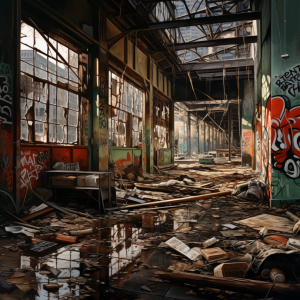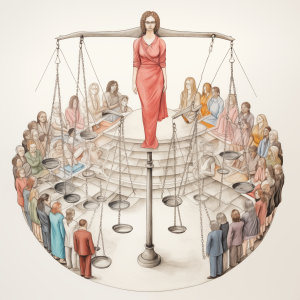Introduction
Nadine M. Connell
Welcome to an Introduction to Criminology and Criminal Justice: An Australasian Perspective. The book you are reading now is the result of a shared vision that students in Australia and its surrounds should have current, contemporary and high-quality textbooks that are focused on their reality, using examples from Australia, New Zealand, and the Pacific Islands. This vision also means ensuring that these materials are not just the best possible, but the most accessible possible. In this way, they are free to students (and interested lifelong learners), designed to be accessible to a range of learning differences and created in such a way that means new ideas and new research can be easily incorporated without the long wait times of traditional publishing.
As you read, I suspect that it will still look and feel a lot like a traditional criminology and criminal justice textbook. And in many ways, it still is. The first three chapters of the book will take you through our basic understanding of crime and criminology. After all, we need to understand the behaviour we are interested in before we can figure out how to explain it! Students will find up to date examples using Australian data and Australian case studies whenever possible and be guided through the complicated world of how we collect the information about crime and victimisation. Soon, the data and statistics will look like more than an unintelligible mess, we promise! And along the way, you will have the opportunity to learn more about several criminal justice organisations and agencies that process and provide these data.
The next section of this textbook focuses on different theoretical perspectives that guide our thinking about why individuals engage in criminal and antisocial behaviour. We have organised these approaches in a chronological fashion, taking students along the journey of criminological theory development over the last two hundred years. You will find that they these theories are diverse, and I won’t be surprised if you change your mind along the way about which explanation makes to most sense to you. Don’t worry, everyone does!

Image generated using Midjourney using the prompt: an ultra realistic image of urban decay, such as abandoned buildings, graffiti, and littered streets –v 5.2
Each theory chapter is organised to help you understand a bit of the historical context of theory while describing the way that it helps us understand crime and deviance. After all, the history surrounding ideas is sometimes as interesting as the idea itself! In each chapter, you will also find different applications and case studies of how the theory works in real life. Whenever possible, research highlighted is from Australian and surrounding countries. The study of criminology and criminal justice in university settings in Australia is still quite young compared to other countries, but that hasn’t stopped scholars from designing and creating cutting edge research. We hope you enjoy reading about it as much as we enjoyed writing about it!
We also take a few moments to talk about the criticisms of the theoretical perspectives, as no explanation has yet to be found applicable for all individuals and all circumstances. Good theory is important to design and implement good policy, so we give you the opportunity to learn about these theories but also be critical about how they can – and cannot – be used in the real world. Many chapters also look to the future of these theoretical frameworks, where new crimes and new technologies are constantly pushing the boundaries of what we know and how we can respond. Technological advancements bring with them exciting new ways to make our lives easier (and we may have used a little bit of generative artificial intelligence to help us design some fun pictures) but also gives individuals and organisations new options when it comes to committing all sorts of crime. We would be remiss to ignore the effect of this new technology on our understanding of criminal and deviant behaviour.
Sprinkled among the chapters are examples of recent Australian focused research, much of which has been conducted by the very students of the School of Criminology and Criminal Justice here at Griffith University. As part of their Honours or Post-Graduate work, students undertake their own research projects while working with an academic supervisor. These are students just like yourselves, and in a few years, you could be doing similar projects! Some of these projects have even become peer-reviewed publications! This is a great opportunity to learn more about what research is like and participate in helping to create knowledge! You will see many of the research-write ups also link to research presentations on the topic. You will hear in the researchers’ own words about the exciting work that they have done. I hope it makes you more excited about what you are learning and also gives you more confidence that you, too, can be a criminal justice researcher.
Towards the end of our discussion on theoretical explanations of criminal behaviour, particularly in Chapters 13 and 14, we turn a more critical eye to our discipline. As we mention in Chapters 1 and 2, the definition of crime can change. Chapter 14, in particular, asks important questions about whose definition of crime counts and how defining crime can change who is – and who is not – criminal. We hope it inspires you to think more deeply about our society and our place in our society, and especially how your work in the field of criminal justice can help promote social justice and change. After all, justice is not as blind – or as objective – as we may hope.

Image generated using Midjourney using the prompt: cartoon of gender injustice in the criminal justice system –v 5.2
The ways to change the system, of course, are dependent on how the system works. In Chapter 15, you will be introduced to the various reactions to criminal and deviant behaviour. This is a glimpse into what your future classes will talk about and will also begin to give you ideas about what types of jobs and agencies you will be most interested in.
Each chapter also includes a self-assessment quiz, where you can check your own knowledge and make sure that you understand what you are learning about. It is a great way to identify places where you may still have questions or want to do extra research. To help you with that, each chapter will also have links to extra sources of information, including interviews with scholars, information about current day laws and policies, and more in-depth information about particularly relevant topics and programs. Be sure to check them out for more interesting criminal justice knowledge!
This book is the first attempt of an entire school to work together to create resources that will be useful to our students and beyond. We have tried to showcase Australian scholars and those from neighbouring countries in every way that we could. But this is just Version 1! As you read, if you think we have missed something, let us know! Version 2 will be here before you know it and we hope it will be even more full of current and useful examples! Happy reading!

